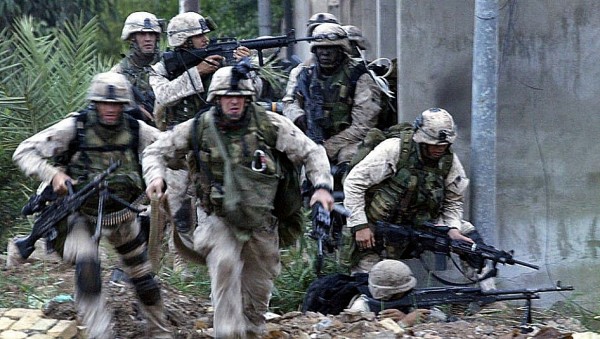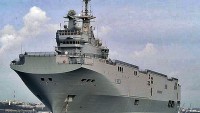US Army Preparing to Win Urban Warfare, the Dominant Form of Future War
| Arthur Dominic Villasanta | | May 08, 2017 07:48 PM EDT |
(Photo : USMC) U.S. Marines in the First Battle of Fallujah, April 2004.
The U.S. Army affirms that future warfare will mostly be urban warfare -- or Urban Operations (UO) in its parlance -- and is rearming and reconfiguring its units to fight and win this most deadly form of fighting.
The focus on UO, which inevitably results in high military and civilian casualties as proven by the savage fighting in Mosul, Iraq, is being driven by the irreversible worldwide trend towards urbanization.
Like Us on Facebook
The army estimates that up to 90 percent of the world's population will live in cities and megacities by 2050.
U.S. Army General Mark Milley, Chief of Staff of the Army (CSA), said the dense urbanization of global populations has huge implications for armies and specifically the U.S. Army. Urbanization is fundamentally changing the character of warfare.
Gen. Milley noted that today's global population of some six billion people will grow to eight billion by 2050. Of this future population, from 85 to 90 percent will live in cities and highly dense, complex urban areas.
He was more concerned with "megacities," which he defined as cities with populations of more than 10 million people.
As of this year, the United Nations said there are 37 megacities in existence. The largest of these are Tokyo and Shanghai (each having a population of over 30 million persons). The UN predicts there will be 41 megacities by 2030 and over 50 by 2050.
Twenty five of the world's 37 megacities are located in Asia. In this number are Jakarta, Karachi, Seoul, Shanghai and Manila.
Apart from these megacities, there will be even more cities with populations of two to five million persons, said Gen. Milley.
"It's highly probable that the military forces armed conflict will occur in highly dense urban complex terrain, physical terrain," he said.
"The U.S. Army has been optimized to fight in rural terrain, to fight in plains of northern Europe, North America and deserts in the Middle East," he noted.
This focus on rural warfare has implications how the army trains, organizes and equips its fighting units.
Other implications for urban battles mean that military equipment will have to be adjusted to fight in the more confined space inside cities. Command and control and communication will be challenging since reinforced concrete can interfere with signals.
"As we go forward, we're probably going to have to shift gears significantly in the coming decade or so to optimize the Army," he said.
The army also concludes it will need the swarming capability inherent in unmanned and small weapons to operate in urban environments. These smaller weapons must also be expendable and cheap.
TagsU.S. Army, urban warfare, Urban Operations, cities, megacities, General Mark Milley
©2015 Chinatopix All rights reserved. Do not reproduce without permission
EDITOR'S PICKS
-

Did the Trump administration just announce plans for a trade war with ‘hostile’ China and Russia?
-

US Senate passes Taiwan travel bill slammed by China
-

As Yan Sihong’s family grieves, here are other Chinese students who went missing abroad. Some have never been found
-

Beijing blasts Western critics who ‘smear China’ with the term sharp power
-

China Envoy Seeks to Defuse Tensions With U.S. as a Trade War Brews
-

Singapore's Deputy PM Provides Bitcoin Vote of Confidence Amid China's Blanket Bans
-

China warns investors over risks in overseas virtual currency trading
-

Chinese government most trustworthy: survey
-

Kashima Antlers On Course For Back-To-Back Titles
MOST POPULAR
LATEST NEWS
Zhou Yongkang: China's Former Security Chief Sentenced to Life in Prison

China's former Chief of the Ministry of Public Security, Zhou Yongkang, has been given a life sentence after he was found guilty of abusing his office, bribery and deliberately ... Full Article
TRENDING STORY

China Pork Prices Expected to Stabilize As The Supplies Recover

Elephone P9000 Smartphone is now on Sale on Amazon India

There's a Big Chance Cliffhangers Won't Still Be Resolved When Grey's Anatomy Season 13 Returns

Supreme Court Ruled on Samsung vs Apple Dispute for Patent Infringement

Microsoft Surface Pro 5 Rumors and Release Date: What is the Latest?













